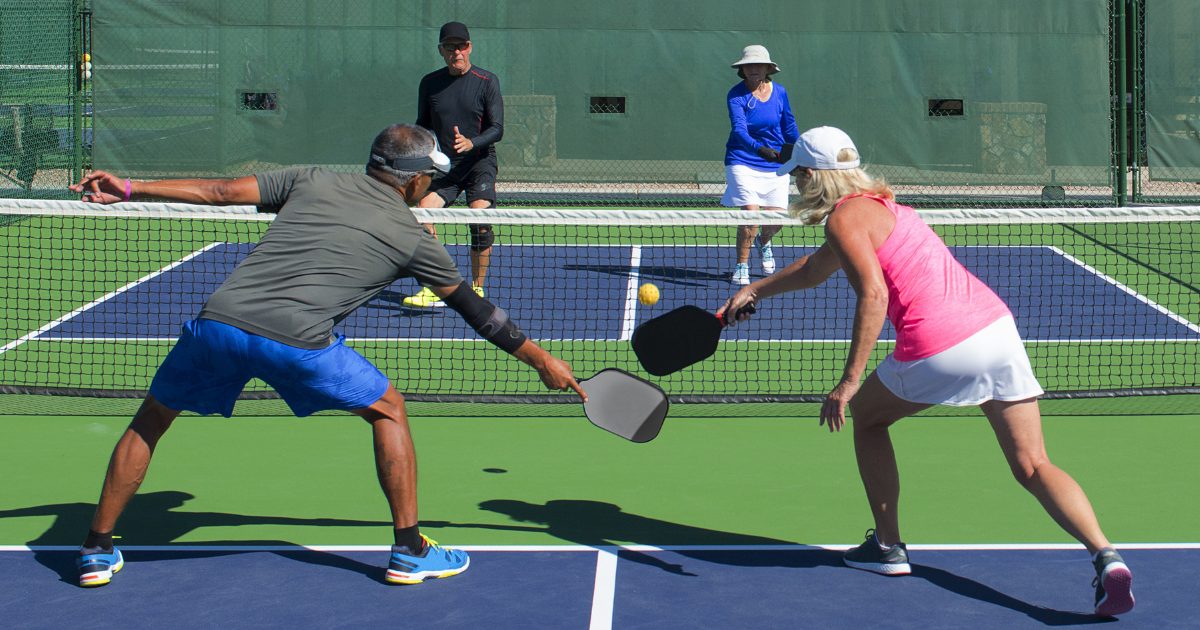Pickleball is not just a fun and thrilling game, but also an art that demands practice and strategy. Knowing how to smash the ball with your paddle in various conditions is one of the most crucial components in pickleball. These are what are known as shots, and they come from hitting the ball with various strokes.
There are many different types of pickleball shots, each with its own set of pros and cons, and you need to learn when and how to use them wisely. them to utilize them successfully. In this post, I will go over the basics of pickleball strokes and shots, how to practice them, and how to apply them in your game.
Pickleball Strokes
Let’s clarify a few terms utilized in the game. People frequently confuse the terms “stroke” and “shot,” assuming that they mean the same thing. However, they have different meanings.
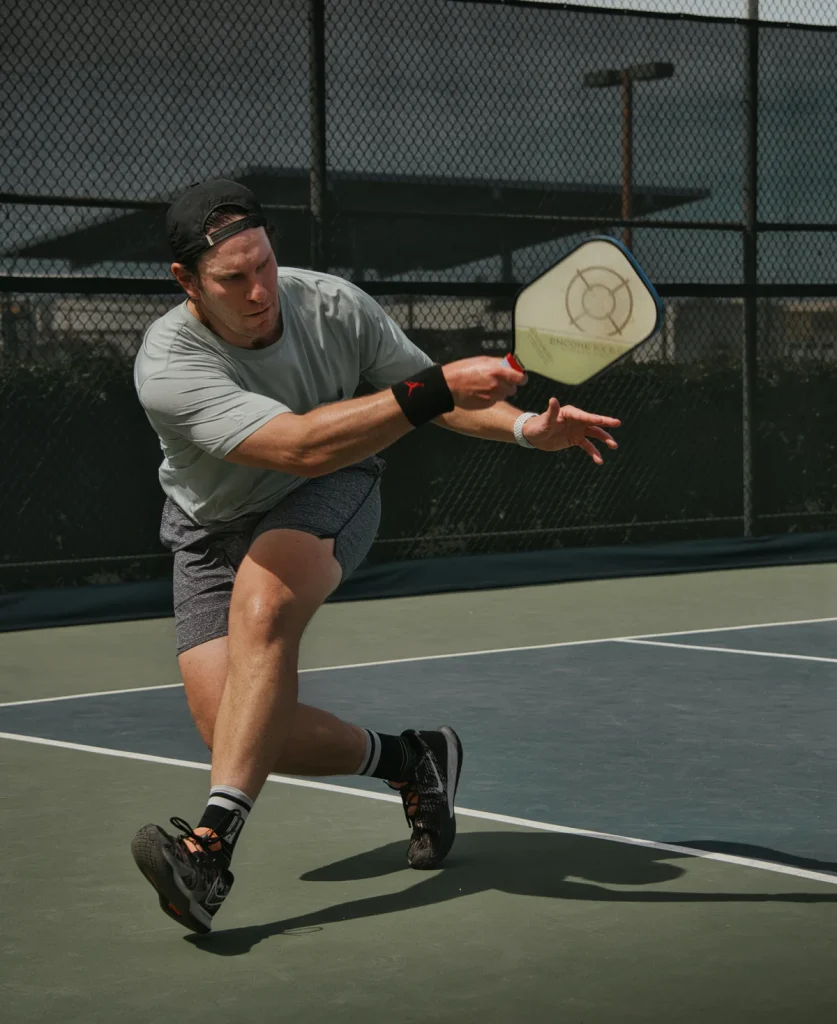
A stroke is how your body moves to generate power on the pickleball. On the other hand, the shot is defined by what the ball does after that. It’s important to understand the difference between these two terms in order to fully understand how the game works.
Types of Pickleball Strokes
There are three basic pickleball strokes.
The Groundstroke:
This is a stroke used when the ball bounces on the ground before you hit it. A groundstroke can be used for both forehand and backhand shots. The groundstroke can be used to hit the ball with power and precision, as well as to return deep serves or strokes from your opponent.

The Volley:
This is a shot used to hit the ball in the air before it lands on the ground. The volley is excellent for hitting the net, applying pressure on your opponent, and wrapping up the rally swiftly.
The Dink:
The dink is a delicate move in which you slightly hit the ball into the kitchen, the non-volley zone on your opponent’s side. It’s a versatile shot that can be utilized for offense or defense based on elements like depth, trajectory, and spin. The basic goal is to maintain control of the point while patiently waiting for your opponents to make a move that you can exploit, perhaps resulting in a point for you.
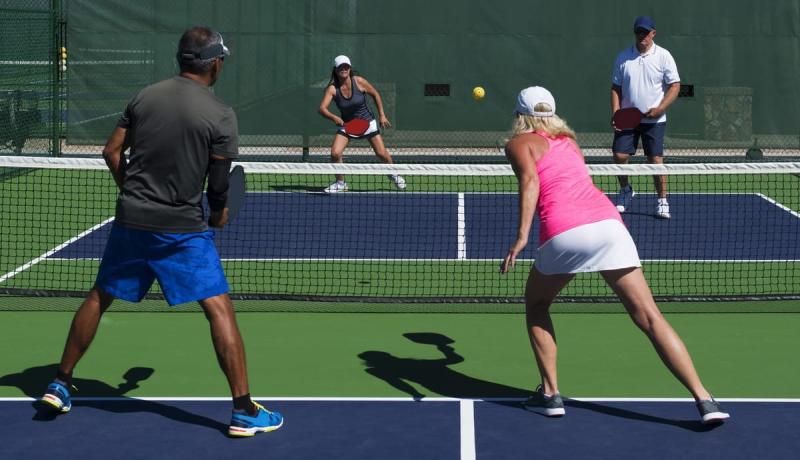
Pickleball Shots
There are several powerful pickleball shots to learn, but the most important ones to master are the basic ones. Let’s go over the basic pickleball shot types.
Types of Pickleball Shots
Serve
A serve in pickleball is the initial shot of a rally in which the server smashes the ball underhand and below the waist and directs it to the receiver’s diagonally opposite service court. The serve must pass the net and the non-volley zone (commonly known as the kitchen) and cannot bounce before hitting.
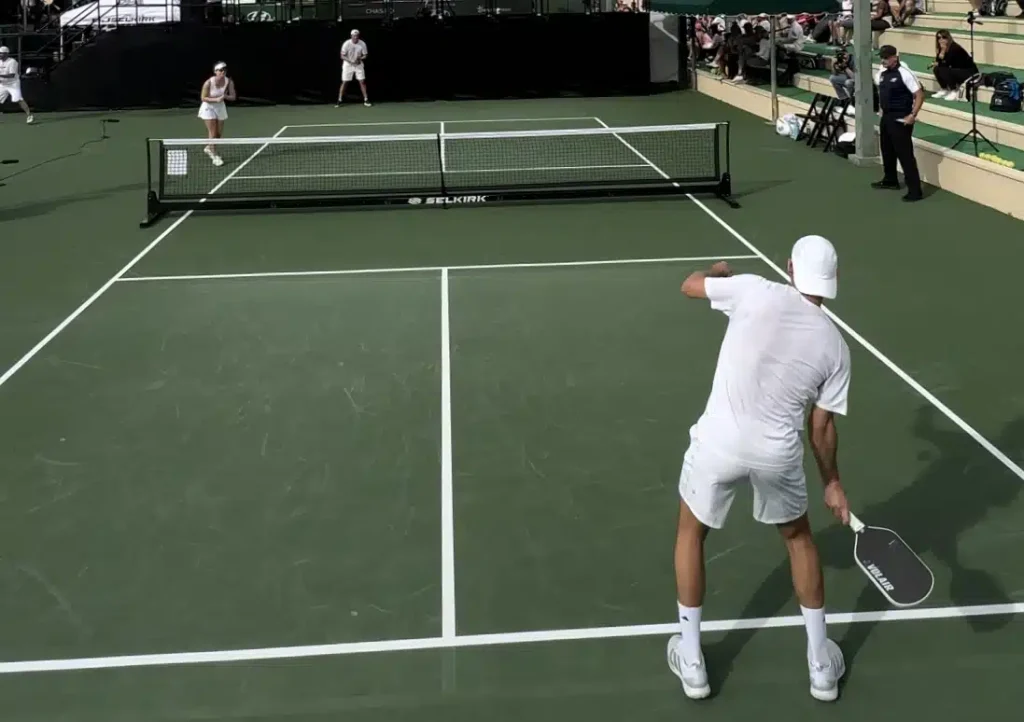
The Pickleball Lob
A lob shot pickleball is when you hit the ball high, above your opponent’s head. This move is intended to cause them to move to the back of their side, adjusting the pace of the game. However, if not done properly, your opponent can respond by jumping or taking a step back to crush the ball, transforming it into a strong assault.
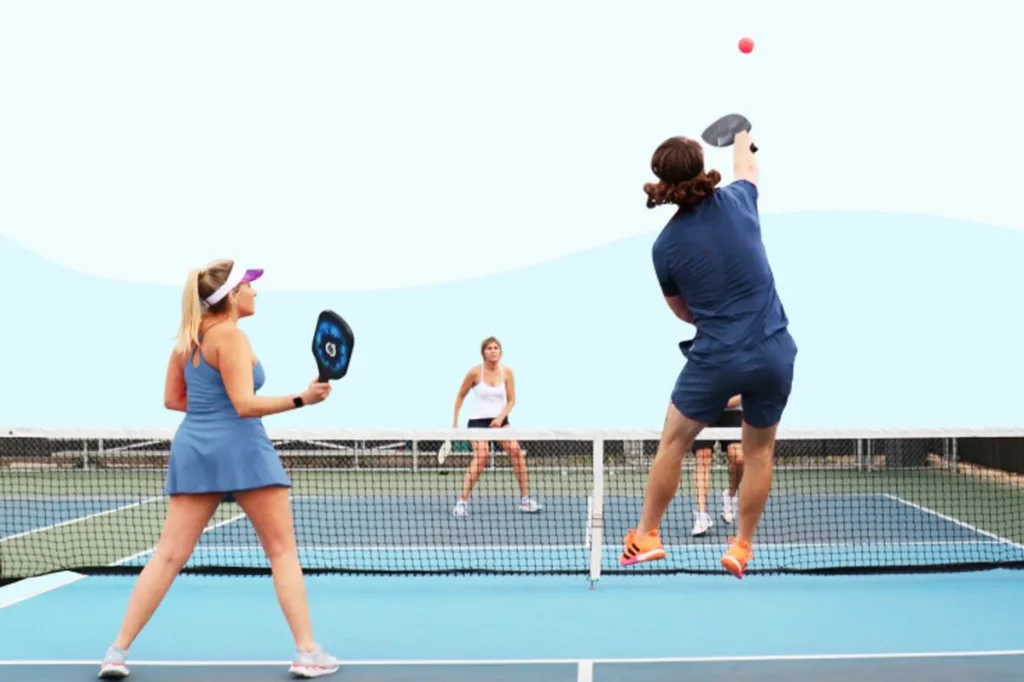
Because of this risk, players need to learn the skill of a well-executed lob. A successful lob not only slows down aggressive play but also allows players to re-establish themselves in a solid offensive position near the net.
Backhand Spin Dink
The cross-court dink is a strong pickleball play in which you slightly tap the ball from one side of the court to your opponent’s area on the opposite side. It’s a typical non-volley zone shot. Learning the proper technique for the cross-court dink is a valuable skill in competitive games.
Topspin Roll Volley
Mastering the topspin roll volley in pickleball is a difficult task, but it is one of the most incredible pickleball trickshots. This skill demands skill, excellent execution, and an in-depth understanding of when to use it.
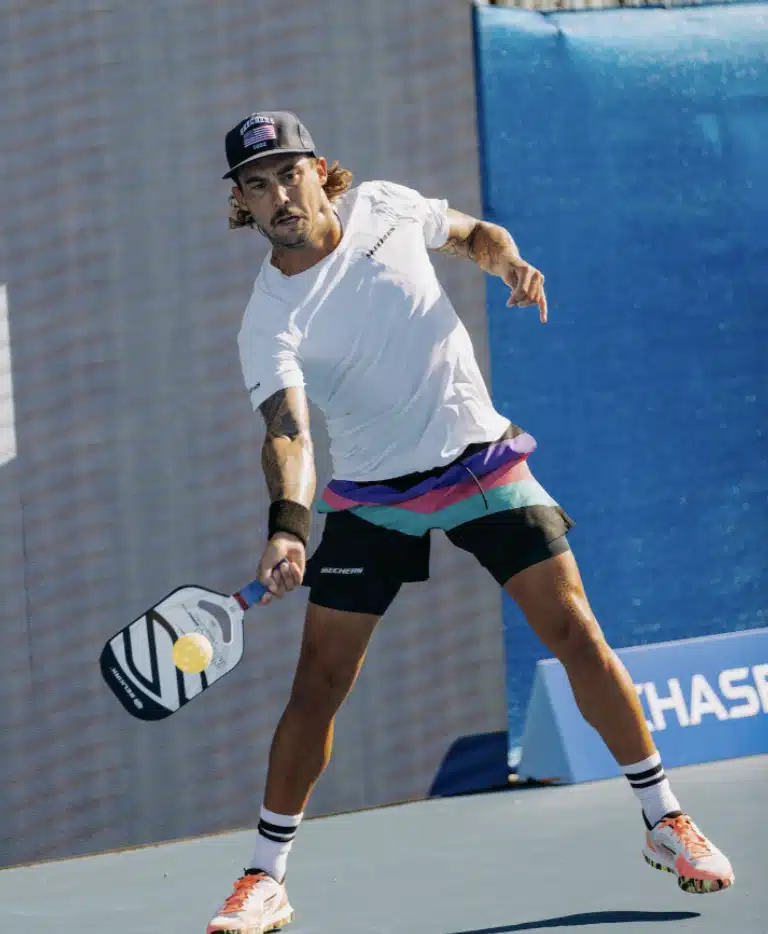
The topspin roll volley is executed by taking the shot from the front at net height. By positioning yourself under the ball and lifting your paddle from a low to a high position with a mid-powered backswing, you can generate a significant topspin and speed. This powerful duo keeps opponents on their side of the court.
Erne
Whether you like it or not, the kitchen is an important feature that differentiates pickleball. This 7-foot area near the net frequently causes on-court frustrations, especially with the challenge of volleys in the non-volley zone taking first place. If you’re dealing with this problem, the Erne could be the way to go.
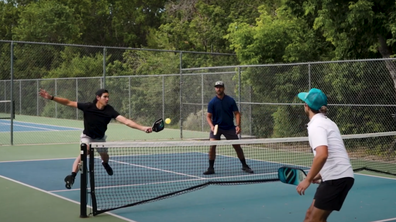
The Erne is a clever movement that defies the kitchen conventions. It allows you to strike the ball at an angle, generally causing it to drop down or close to the net, allowing you to volley just over the kitchen.
Third Shot Drop
The third shot drop is vital for improving your pickleball game. It takes center stage in advanced play, frequently determining the outcome of many points. The pressure mounts during the third shot, especially if your opponents have the upper hand in the kitchen while you and your partner remain near the baseline.
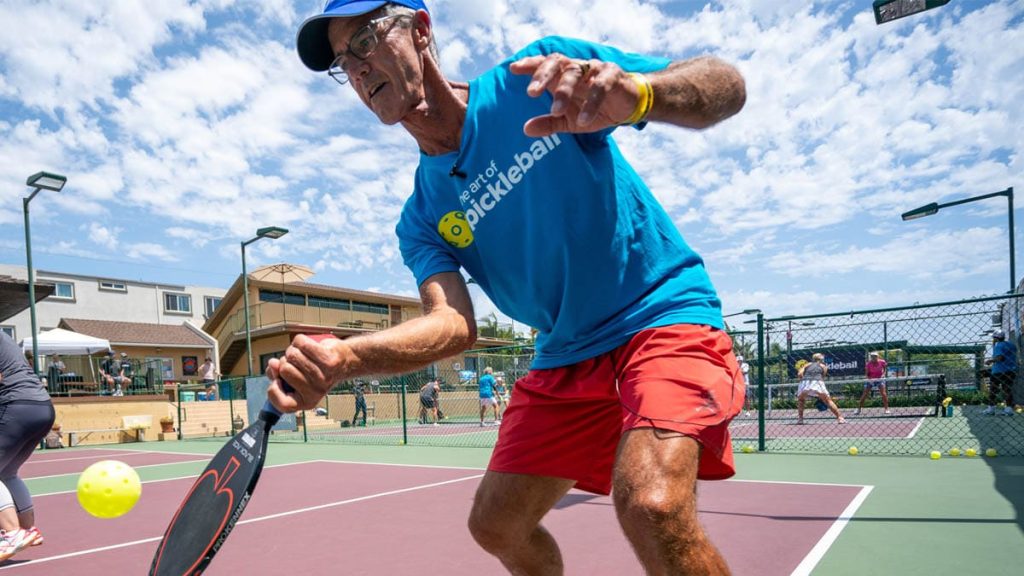
The third shot drop is a finesse technique in which the ball is gently arced and lands softly in the kitchen. This mild touch encourages your opponent to use a more controlled, dinking strategy rather than a strong drive. However, accuracy is essential here; if your shot is too far or too high, your opponent can smash or drive the ball, putting the point in danger.
The Backhand Punch
The backhand punch is a tactical move that is meant to catch opponents off guard. When executed straight back at your opponents, this stroke has the ability to convert a basic dink into a shot that wins the rally by simulating the action of a punch. To master this technique, position your contact point well ahead of your body and unleash a punch that propels the ball precisely in the correct direction.
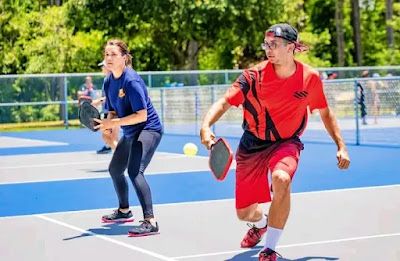
The Overhead Smash
Pickleball’s ultimate game-changer, the smash stands out since it frequently secures vital points. When your opponent’s return hovers high above your head, this powerful move allows you to unleash your strength and strike the ball with speed. An overhead smash from the non-volley zone line requires a steady paddle angle with little wrist movement. Contact should ideally be made in front of your torso, resulting in a controlled downward rotation off the shoulder. Accuracy in smashes requires persistent practice and repetition.
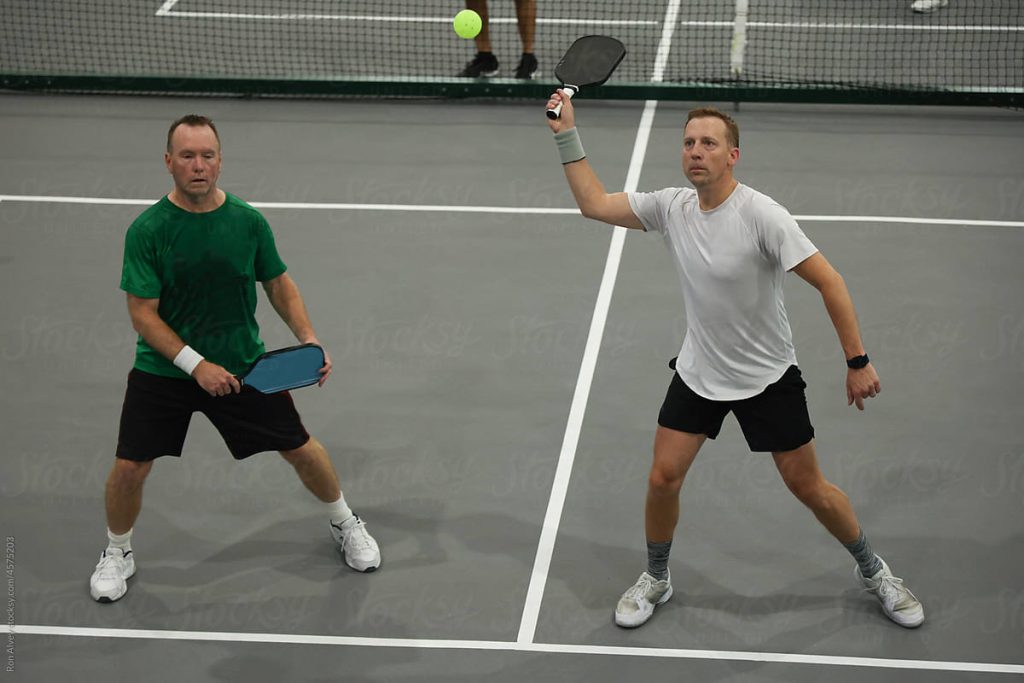
The Fake Dink
The fake, as the name says, includes some trickery. It’s when you pretend to go for a dink but surprise your opponent with a drive instead. This abrupt movement might throw your opponent off guard, especially if the shot is targeted directly at them. The key to pulling this off is to be prepared for a variety of shots in the transition or non-volley zone. Maintain a comfortable stance for your paddle in front of your body so you can seamlessly convert between a dink and a drive. This unpredictability keeps your opponent guessing about the sort of shot you’ll fire.
Conclusion
In order to master pickleball, you must have a wide range of shots. Each challenge has its distinct set of obstacles, demanding fast changes in strategy and shot selection.
Top players excel at staying one step ahead of their opponents by using a variety of strokes, shots, and techniques regularly. The more talents you have, the more equipped you will be to score points and win games.
FAQs
Work on your tossing consistency, grip, and striking the ball at the highest point of your reach. Concentrate on placement and vary your serves to keep your opponents guessing.
Pickleball has a rally-scoring system, which means that a point can be scored by either the serving or receiving team. Games are usually played to 11 points, with a side needed to win by at least two points.
Players should keep good court positions, with one near the baseline and the other in the non-volley zone. For adequate position, effective communication and swift movement are required.

